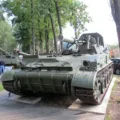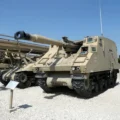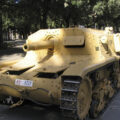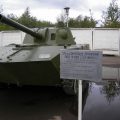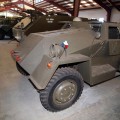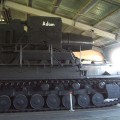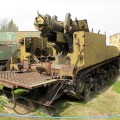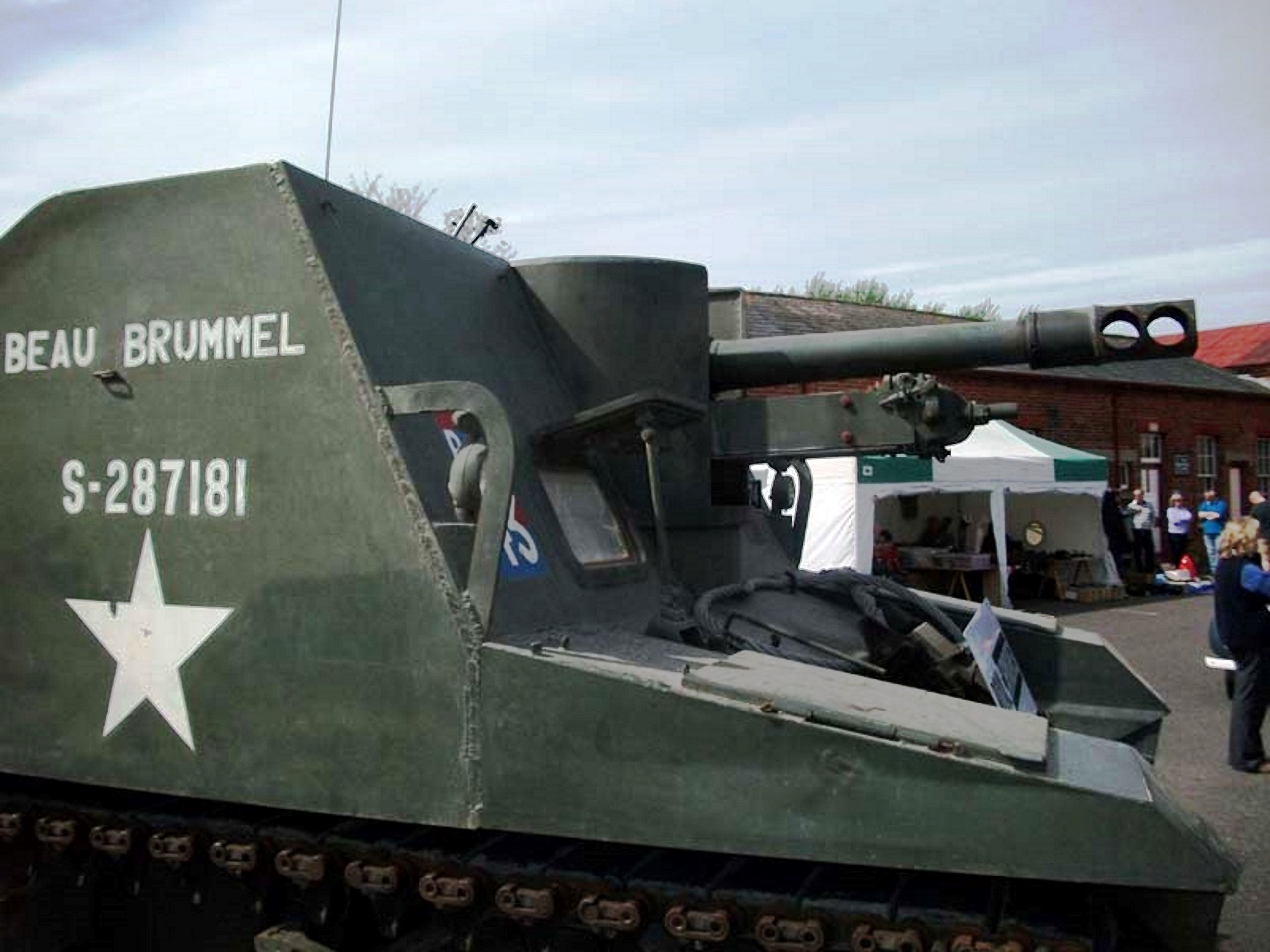
Sexton Selbstfahrende Waffe | |
|---|---|
| Land | Kanada |
| Typ | Selbstfahrende Artillerie |
| Im Dienst | 1943–1956 |
| Gebaut | 2150 |
Der 25pdr SP, verfolgt, Küster war ein selbstfahrendes Artilleriefahrzeug des Zweiten Weltkriegs. Er basierte auf kanadischen Versionen des amerikanischen Panzerfahrgestells M3 Lee und M4 Sherman, die in Kanada als Ram and Grizzly in Produktion gingen. Als die Sherman-Produktion in den USA expandierte und die Versorgung kein Problem mehr darstellte, wurde 1943 beschlossen, die kanadischen Produktionslinien auf die Produktion des Sexton umzustellen, um der britischen Armee eine mobile Artilleriekanone mit ihrer Ordnance QF 25-Pfünder-Kanonenhaubitze zu geben, die eine 87,6 mm (3,45 Zoll) 11,5 kg (25 lb) HE-Granate oder eine panzerbrechende Granate abfeuern konnte. Es fand Verwendung in der kanadischen und britischen Armee sowie in zahlreichen anderen britischen Empire- und assoziierten Streitkräften. Kurz nach dem Krieg wurden eine Reihe von Grizzly und Sextons nach Portugal verkauft, die sie bis in die 1980er Jahre verwendeten.
| Sexton Self Propelled Gun – Walk Around | |
|---|---|
| Fotografen | Lukasz Sambor, Paul Adamson |
| Lokalisierung | Unbekannter |
| Fotos | 29 |
| Saxton Walk Around | |
|---|---|
| Fotograf | Unknow |
| Lokalisierung | Unbekannter |
| Fotos | 29 |
| Sexton SPG Walk Around | |
|---|---|
| Fotograf | Darren Baker |
| Lokalisierung | Unbekannter |
| Fotos | 30 |
Siehe auch:
das Küster was a Canadian-designed self-propelled artillery vehicle used during World War II. It was based on Canadian-built derivatives of the American M3 Lee and M4 Sherman tank chassis. The Sexton mounted the British 87.6 mm (3.45 in) Ordnance QF 25-pounder gun-howitzer, providing mobile artillery support for the British and Commonwealth armies.
varianten:
- Sexton I: The first 125 vehicles manufactured, based on the Ram tank hull.
- Sexton II: Featured boxes added to the rear deck to carry batteries and an auxiliary generator. Based on the Grizzly (M4A1 Sherman) hull.
- Sexton GPO (Gun Position Officer): The 25-pounder was removed, and an extra No. 19 Wireless and map tables were added for controlling battery fire.
Spezifikationen:
- Masse: 25 long tons (25 t)
- Länge: 20 ft 1 in (6.12 m)
- Breite: 8 ft 11 in (2.72 m)
- Höhe: 8 Fuß (2,4 m)
- Crew: 6 (Kommandant, Fahrer, Richtschütze, Geschützleger, Ladeschütze, Funker)
- Rüstung: 15–32 mm (0,59–1,26 Zoll)
- Hauptbewaffnung: Ordnance QF 25-Pfünder (87,6 mm) Mk II, 105 Schuss (hauptsächlich HE) an Bord
- Sekundärbewaffnung: Zwei leichte Maschinengewehre vom Typ Bren 0,303 (7,7 mm) für die Flugabwehr, 50 30-Schuss-Magazine
- Motor: Continental R-975 9-Zylinder Radialbenziner, 400 PS (298 kW)
- Einsatzbereich: 125 Meilen+ (200 km)
- Höchstgeschwindigkeit: 25 mph (40 km/h)
Operativer Service:
das Küster was first used in combat in Italy by the British Eighth Army. It later participated in the invasion of France, the Battle of Normandy, and the campaign in northwest Europe. During the D-Day landings, some Sextons were ordered to fire from their landing craft as they approached the beaches, although the fire was not very accurate. After the war, a number of units were equipped with the Sexton as part of the British Army of the Rhine (BAOR).
The Sexton was generally regarded as a successful project and remained in British service until 1956. Between 1943 and 1945, the Montreal Locomotive Works manufactured 2,150 Sextons for use by Canadian and British forces.
Aufrufe : 3367


